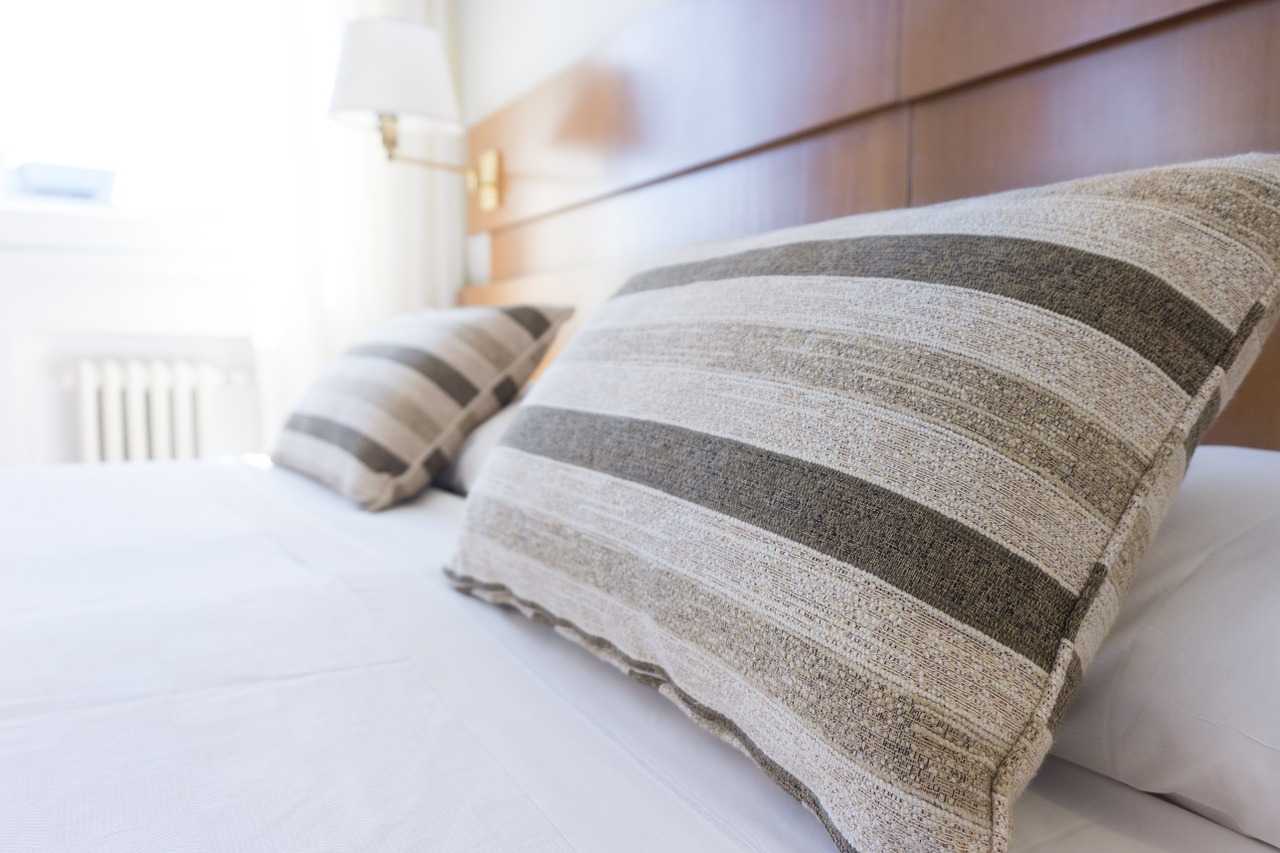
Pillows
In our quest for better sleep and relaxation, weighted blankets and pillows have emerged as groundbreaking solutions, offering a unique approach to alleviate sleep disturbances.
These innovative sleep aids stand out in the vast array of relaxation methods, captivating the interest of those seeking a natural remedy for restless nights. This article explores the science and benefits behind these special tools, shedding light on how they can transform sleep experiences for many individuals.
Understanding Weighted Blankets and Pillows
Weighted blankets and pillows are designed to provide a gentle, even pressure across the body, a concept known as deep pressure stimulation. This pressure is similar to a firm hug and is intended to promote relaxation and comfort.
Typically, these products are filled with materials like glass beads or plastic pellets to add weight, which is evenly distributed throughout the blanket or comforting pillow cuddling.
The Science Behind the Comfort
The principle behind weighted blankets and pillows is deeply rooted in psychology. Deep pressure stimulation is believed to increase serotonin and melatonin levels – neurotransmitters that play a vital role in regulating sleep.
At the same time, it decreases cortisol levels, the body’s stress hormone. This combination can lead to improved mood and relaxation, making it easier to fall and stay asleep.
Benefits for Various Sleep Disorders
- Insomnia: Individuals with insomnia often find that weighted blankets help them feel more relaxed at bedtime, making it easier to fall asleep.
- Restless Leg Syndrome: The even pressure provided by a weighted blanket can be soothing for those with restless leg syndrome, reducing the urge to move their legs.
- Anxiety and Stress: For people who experience anxiety or high levels of stress, the calming effect of weighted sleep aids can be significantly beneficial.
- Sensory Processing Disorders: Those with sensory processing disorders, including some people on the autism spectrum, may find weighted blankets and pillows particularly comforting.
Choosing the Right Product
When selecting a weighted blanket or pillow, careful consideration of several key factors can ensure that you choose the most suitable option for your needs. Here are some important aspects to consider:
- Weight: The most crucial aspect is the weight of the blanket or pillow. A general guideline is to choose one that weighs approximately 10% of your body weight. However, personal preference plays a significant role. Some people may prefer a slightly heavier or lighter touch, so it’s essential to consider what feels most comfortable for you.
- Material: The material of both the outer cover and the filling is important for comfort and durability. Common fillings include glass beads, plastic poly pellets, and sometimes, natural grains. For the cover, breathable materials like cotton are preferable, especially for those who sleep hot. Some weighted blankets come with a removable cover which can be helpful for cleaning and temperature control.
- Size: Make sure the blanket or pillow is appropriately sized for your bed and your body. A weighted blanket should cover your body completely, but not hang over the sides of your bed, as this can cause it to slip off during the night. For pillows, consider your sleeping position and whether you prefer a larger or more compact pillow.
- Distribution of Weight: Check that the weight in the blanket or pillow is evenly distributed. This ensures consistent pressure throughout and enhances the effectiveness of the deep touch pressure therapy. In blankets, this is often achieved through pockets that contain the weighted material, keeping it evenly spread.
- Temperature Control: Some weighted blankets are designed for cooling, using moisture-wicking or breathable fabrics, which can be a good option for hot sleepers. Conversely, if you tend to be cold, look for a blanket with a warmer, plush material.
- Ease of Care: Consider how easy the blanket or pillow is to clean. Removable covers can be machine washed, making them more convenient. Check the care instructions to ensure the product suits your lifestyle.
- Therapeutic Needs: Consider any specific health or therapeutic needs you have. For instance, if you have sensory processing issues, the texture of the blanket will be an important factor. If you suffer from joint pain or other physical conditions, a lighter blanket might be more suitable.
- Quality and Safety: Ensure the product is well-made and safe. High-quality stitching and durable materials are key indicators of a good quality blanket or pillow. Also, check for any safety certifications or compliance with standards.
Remember, the right weighted blanket or pillow can significantly enhance your sleep quality, so taking the time to select the right one for your personal preferences and needs is well worth the effort.
Absolutely, incorporating weighted blankets and pillows into a comprehensive sleep hygiene regimen is essential for maximizing their benefits. Here’s an expanded look at how these tools fit into a broader strategy for better sleep:
Role of Weighted Blankets & Pillows in Sleep Hygiene
Weighted blankets and pillows, known for providing deep pressure stimulation, can significantly improve relaxation and comfort at bedtime. However, their effectiveness is greatly enhanced when used as part of an overall sleep hygiene practice. This approach should include several key elements:
- Regular Sleep Schedules: Consistency is crucial in sleep hygiene. Going to bed and waking up at the same time every day, even on weekends, helps regulate your body’s internal clock, making it easier to fall asleep and wake up naturally.
- Creating a Comfortable Sleep Environment: The environment in which you sleep plays a critical role in the quality of your rest. This includes factors like a comfortable mattress and pillows, a cool room temperature, and minimal noise and light pollution. A weighted blanket can add to this environment by providing a comforting, gentle pressure that promotes relaxation.
- Avoiding Stimulants Before Bedtime: Stimulants such as caffeine and nicotine can interfere with your ability to fall asleep. Similarly, electronic devices emit blue light, which can disrupt your circadian rhythm. Avoiding these stimulants in the hours leading up to bedtime can help prepare your body for rest.
- Relaxation Techniques: Incorporating relaxation techniques such as meditation, deep breathing exercises, or gentle yoga can help calm your mind and body in preparation for sleep. Using a weighted blanket during these activities can enhance the relaxation effect.
- Limiting Evening Liquids: Reducing liquid intake before bed minimizes the likelihood of nighttime awakenings to use the bathroom, thereby promoting uninterrupted sleep.
- Dinner Timing and Composition: Eating a heavy meal right before bed can lead to discomfort and disrupt your sleep. Aim to have dinner a few hours before bedtime and avoid foods that can cause indigestion.
- Addressing Sleep Disorders: If you suffer from a sleep disorder or chronic sleep issues, it’s important to seek advice from a healthcare professional. While weighted blankets can aid in relaxation, they are not a cure-all for serious sleep conditions.
Conclusion
In conclusion, while weighted blankets and pillows can significantly contribute to improved sleep quality, they are most effective when used as part of a holistic approach to sleep hygiene. By combining these sleep aids with regular sleep schedules, a comfortable sleep environment, and healthy pre-sleep habits, individuals can create an optimal setting for restful and rejuvenating sleep.






